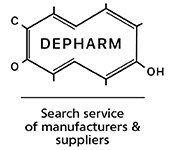Theme: New approaches to outbreak surveillance of Influenza and Zoonotic diseases
Influenza 2017
Objective
After the success of Influenza 2016, Conference Series welcomes you to the 3rd International Conference on Influenza and Zoonotic Diseases to be held from August 21-22, 2017 in Birmingham, UK. The theme of Influenza 2017 is "Lower the Impact of Influenza on Public Health" Influenza 2017 offers a unique window and opportunities to present and evidence the latest updates with a holistic approach to different areas of interest. We have done our outmost to get rid of the traditional approach in the elaboration of the programme and most importantly, during the active sessions, in order to foster innovation and scientific curiosity. Our intention is, to create platforms which will gather eminent scientists, medical professionals who will undoubtedly enrich the conference.
B2B & Sponsors
Influenza-2017, Birmingham, UK has exhibitor spaces available for product promotion by industrial exhibitors or act as the potential sponsor to introduce products of academia, industrial and field applications. Exhibitor booths are served on First come First serve basis depending on the space availability. Timely notification to the organizers is highly recommended to make appropriate arrangements.
About Organizer
ConferenceSeries Ltd, has organized more than 700 conferences around the world. Our goal is to reach the scientific knowledge to All, through our +500 open access journals from all the leading themes of life science, engineering and technology. 3rd International Conference on Influenza and Zoonotic Diseases - 2017 is organized with the support of the editorial board from the : Journal of Infectious Diseases & Therapy, Journal of Infectious Diseases and Diagnosis, Advances in Influenza Research, Journal of Vaccines & Vaccination, Journal of Virology & Antiviral Research.
Target Audience:
Vaccinologists
Immunologists
Virologists
Health-Care Professionals
Researchers and Scientists
Training Institutes
Universities and Colleges Students
Associations and Societies
Pharmaceutical and Healthcare Companies
Business Entrepreneurs
This includes prompt keynote presentations, Oral talks, Poster presentations and Exhibitions.
Influenza 2017 stand for advertising of the products/services of the companies shall be placed in the exhibition area throughout the conference.
We have the pleasure to invite and welcome you for the participation to our exciting conference. Let us meet in one of the most glorious cities in the world.
Track 1: Pathogenicity of Influenza Virus
Influenza infection is brought into the aviation routes by vaporized or by contact with salivation or other respiratory discharges from a contaminated individual, it ties to and reproduces in epithelial cells of both the upper and lower respiratory tract. Viral replication consolidated with the resistant reaction to disease prompt to demolition and loss of the epithelial cells the respiratory mucosa. Hack and shortcoming may hold on for up to 2 weeks after disease. Influenza enters the host through the aviation routes. Influenza entanglements of the upper and lower respiratory tract are regular. These incorporate otitis media, sinusitis, bronchitis, and croup. Pneumonia is among the more serious difficulties of Influenza disease, an occasion most much of the time saw in kids or grown-ups. Human Influenza prompts to complex cytopathic impacts because of downregulation of host cell protein combination and apoptosis, prevalently in the aviation routes epithelial cells. Apoptosis is interceded by both Fas-intervened systems and Fas-autonomous signs, which starts a caspase course. NA can actuate inactive TGF-β on the cell surface by encouraging cleavage of TGF-β into its dynamic shape that up-directs master apoptotic qualities. Apoptosis happens likewise in lymphocytes clarifying the lymphopenia saw amid intense disease.
Related Conference
2nd International Conference on Flu,Oct 31- Nov 2, 2016 in San Francisco, USA; 4th Euro-Global Conferences on Infectious Diseases, during September 07-09, 2017 at Paris, France; 3rd World Congress on Infectious Diseases, during August 21-23, 2017 California, San Francisco, USA; Annual Conference on Rare Diseases and Orphan Drugs, Oct 26-27, 2016 USA; International Conference on Vector Borne Diseases ,June 29-30, 2017 Philadelphia, USA; Infection Prevention and control (IPAC), during June 18-21, 2017 Canada; 27th European Congress of Clinical Microbiology and Infectious Diseases, during 22 - 25 April 2017 Austria; 19th International Conference on Clinical Microbiology and Infectious Diseases, during March 11 - 12, 2017 UAE; Keystone Symposia: New developments in our basic understanding of tuberculosis, Jan 14-18, 2017 Canada; 35th UC Davis Annual infectious diseases conference Feb 03-04, 2017 USA
Track 2: Influenza Vaccines and Vaccination
Influenza antibodies are immunizations that secure against Influenza. A yearly occasional Influenza antibody (either the Influenza shot or the nasal Influenza immunization) is the most ideal approach to decrease the risk of infection. Influenza immunizations make antibodies create in the body around two weeks after inoculation. These antibodies works against disease with the infections that are in the vaccine. Antibodies work by impelling the safe framework without hesitation. The adequacy of an antibody relies on upon how energetically the safe framework reacts to it. Numerous ceaseless sicknesses can debilitate a body's resistances. The immunizations are for the most part protected. In children fever happens in the middle of 5 to 10%, as may muscle agonies or feeling tired. In specific years, the immunization causes Guillain Barre disorder in more established individuals in around one for every million measurements. They come in both dormant and debilitated viral structures. The inert variant ought to be utilized the individuals who are pregnant. They come in structures that are infused into a muscle, sprayed into the nose, or infused into the middle layer of the skin.
Related Conference
2nd International Conference on Flu,Oct 31- Nov 2, 2016 in San Francisco, USA; Annual Conference on Rare Diseases and Orphan Drugs, Oct 26-27, 2016 USA; 4th Euro-Global Conferences on Infectious Diseases, during September 07-09, 2017 at Paris, 5th International Congress on Bacteriology and Infectious Diseases, May 25-26, 2017 Chicago, Illinois, USA; International congress on Infectious Diseases, May11-12, 2017 Barcelona, Spain; International Conference on Retroviruses and Novel Drugs, July 27-28, 2017 Vancouver, Canada; 35th Annual Infectious Diseases Conference, February 3-4, 2017 Sacramento, CA, United States; 24th Conference on Retroviruses and Opportunistic Infections, February 13-16, 2017 Seattle, USA; 27th European Congress of Clinical Microbiology and Infectious Diseases, April 22-25, 2017 Vienna, Austria; Sixth International Conference on Infectious Disease Dynamics 29 November-1 December, 2017 Sitges (near Barcelona), Spain;
Track 3 : Influenza: Causes, Symptoms and Treatment
There are three types of influenza virus strains : A, B, and C. Type A & B infections are in charge of the seasonal infection. Type A influenza infections are found in various animals, including ducks, chickens, pigs, and steeds. Type B infections flow broadly just among people. Flu infections are continually changing, with new strains showing up consistently. On the off chance that somebody had influenza infection previously, their body has officially made antibodies to battle that specific strain of the infection. In the event that future influenza infections are like those experienced beforehand, either by having the sickness or by inoculation, those antibodies may prevent disease or diminish its seriousness. Confusions of flu can incorporate bacterial pneumonia, ear contaminations, sinus diseases, parchedness, and exacerbating of incessant therapeutic conditions, for example, congestive heart disappointment, asthma, or diabetes. Yet, antibodies against influenza infections experienced in the past can't shield from new flu subtypes that can be altogether different immunologically from beforehand disease.
Related Conference
Annual Conference on Rare Diseases and Orphan Drugs, Oct 26-27, 2016 USA;2nd International Conference on Flu,Oct 31- Nov 2, 2016 in San Francisco, USA;4th World Congress on Infection Prevention and Control, Nov 28-29, 2016, Valencia, Spain; International congress on Infectious Diseases, May 11-12, 2017 Barcelona, Spain;5th International Congress on Bacteriology and Infectious Diseases, May 25-26, 2017 USA; 19th International Conference on Infectious Diseases, Jan 26 - 27, 2017 Sydney Australia; Advances in Basic and Translational Research in Tropical Infectious Diseases ,Mar 12-17, 2017 Hotel Galvez Galveston, TX; Keystone Symposia: New developments in our basic understanding of tuberculosis, Jan 14-18, 2017 Canada; 35th UC Davis Annual infectious diseases conference Feb 03-04, 2017 USA; STI & HIV World Congress ,July 9-12, 2017 Rio de Janeiro, Brazil
Track 4 : Influenza Strains : Detection and Differentiation
Laboratory diagnosis of influenza has turned into a foundation of the prevention, containment, surveillance, and treatment of the related diseases. Various influenza tests are accessible to distinguish flu infections. The most widely recognized are called rapid influenza diagnostic tests. These tests can give brings about 30 minutes or less. The research facility finding of influenza uses an extensive variety of procedures including quick immunoassays, immunofluorescence systems, infection culture techniques, and progressively complex atomic measures. Research center distinguishing proof of human flu infection diseases is normally performed utilizing direct antigen detection, virus isolation in cell culture, or influenza-specific RNA by reverse transcriptase-polymerase chain reaction (RT-PCR).
Related Conference
4th International Conference on Sexually Transmitted Diseases, Jun 19-20, 2017 UK ;International Conference on Vector Borne Diseases ,June 29-30, 2017 Philadelphia, USA; 2nd International Conference on Flu,Oct 31- Nov 2, 2016 in San Francisco, USA; 3rd International Conference on Retroviruses and Novel Drugs ,July 27-28, 2017 Vancouver, Canada; UK;3rd World Congress on Infectious Diseases ,Aug 21-23, 2017 California, San Francisco, USA; 24th Conference on retroviruses and opportunistic infections Feb 13-16, 2017 USA; Keystone Symposia-Malaria: From innovation to eradication, Feb 19-23, 2017 Uganda; Australasian society for infectious diseases annual scientific meeting, Mar 29-Apr 01, 2017; ICHA 2017: 19th International Conference on HIV and AIDS ,May 25-26, 2017 London, UK; STI & HIV World Congress ,July 9-12, 2017 Rio de Janeiro, Brazil
Track 5 : Zoonotic Diseases: Global Infectious Disease Burden
A zoonotic disease is a disease that can be spread amongst animals and people. Zoonotic disease can be brought about by infections, microbes, parasites, and organisms. Researchers estimates that more than 6 out of each 10 infection illnesses in people are spread from animals. Significant diseases, for example, Ebola infection, salmonellosis and flu are zoonosis. Zoonosis can be created by a scope of sickness pathogens, for example, infections, microscopic organisms, growths and parasites; of 1,415 pathogens known to contaminate people, 61% were zoonotic. Most human diseases originated in animals; nonetheless, just diseases that commonly include animal to human transmission, similar to rabies, are considered as direct zoonosis. The hugest zoonotic pathogens bringing about foodborne illnesses are Escherichia coli O157:H7, Campylobacter, Caliciviridae, and Salmonella. Zoonoses are of interest since they are regularly already unrecognized virulence or harmfulness in population lacking invulnerability. The West Nile infection showed up in the United States in 1999 in the New York City territory, and traveled through the nation in the mid-year of 2002, creating much distress. Bubonic torment is a zoonotic ailment as are salmonellosis, Rocky Mountain spotted fever, and Lyme ailment.
Related Conference
2nd International Conference on Flu,Oct 31- Nov 2, 2016 in San Francisco, USA; 4th Euro-Global Conferences on Infectious Diseases, during September 07-09, 2017 at Paris, France; 3rd World Congress on Infectious Diseases, during August 21-23, 2017 California, San Francisco, USA; Annual Conference on Rare Diseases and Orphan Drugs, Oct 26-27, 2016 USA; International Conference on Vector Borne Diseases ,June 29-30, 2017 Philadelphia, USA; Infection Prevention and control (IPAC), during June 18-21, 2017 Canada; 27th European Congress of Clinical Microbiology and Infectious Diseases, during 22 - 25 April 2017 Austria; 19th International Conference on Clinical Microbiology and Infectious Diseases, during March 11 - 12, 2017 UAE; Keystone Symposia: New developments in our basic understanding of tuberculosis, Jan 14-18, 2017 Canada; 35th UC Davis Annual infectious diseases conference Feb 03-04, 2017 USA
Zoonotic diseases are those diseases shared by animals and people. Around 150 zoonotic diseases are known to exist. Wildlife serves as a supply for some diseases basic to domestic animals and people. People working with wildlife life should be aware of the potential for disease transmission from animals. Most of the microbes that cause illness in wildlife likewise cause ailment in man. There are a several important routes of disease transmission. The contamination of dismissed minor injuries, abrasions, and skin sores where the skin is broken serve as basic entries of section for microorganisms. These contaminations are every now and again brought on by mixed groups of microorganisms, however they for the most part include Staphyloccocci and Streptococci. Another vital method of transmission is the infection of mucous layers, basically the mouth, with feces or urine. Infections are known to taint an extensive variety of hosts, including people and wild animals. The typical method of transmission and dispersal is through the direct contact or aerosol contact with others of their own species. Some organisms for example, waterfowl, encounter epizootics (epidemics in wildlife) caused by viruses. All species of wildlife carry their own complement of helminth intestinal parasites Our domestic animals likewise have particular sorts of roundworms. There are two types of infection created by these parasites. These are one-celled creature parasites that taint both untamed life and people. A few types of ticks are in charge of transmitting illnesses from untamed life species to people. As these ticks create from adolescents to grown-ups, they parasitize a few distinct hosts. In ticks, the infective creature is transmitted both from the female to her posterity and between phases of the tick's life cycle
Related Conference
2nd International Conference on Flu,Oct 31- Nov 2, 2016 in San Francisco, USA; Annual Conference on Rare Diseases and Orphan Drugs, Oct 26-27, 2016 USA; 4th Euro-Global Conferences on Infectious Diseases, during September 07-09, 2017 at Paris, 5th International Congress on Bacteriology and Infectious Diseases, May 25-26, 2017 Chicago, Illinois, USA; International congress on Infectious Diseases, May11-12, 2017 Barcelona, Spain; International Conference on Retroviruses and Novel Drugs, July 27-28, 2017 Vancouver, Canada; 35th Annual Infectious Diseases Conference, February 3-4, 2017 Sacramento, CA, United States; 24th Conference on Retroviruses and Opportunistic Infections, February 13-16, 2017 Seattle, USA; 27th European Congress of Clinical Microbiology and Infectious Diseases, April 22-25, 2017 Vienna, Austria; Sixth International Conference on Infectious Disease Dynamics 29 November-1 December, 2017 Sitges (near Barcelona), Spain.
Track 7: Tracking and Preventing Zoonotic Disease
Zoonotic diseases are diseases transmitted from animals to humans. Zoonotic diseases come in the form of bacteria, viruses, fungus, or parasites. There are over 250 zoonotic organisms, with only about 40 being transmitted from dogs and cats. Whatever remains of the zoonotic animals are transmitted from bird, reptiles, farm animals, wildlife, and other mammalsIndividuals who have a debilitated or a bargained safe framework, for example, the individuals who are accepting chemotherapy, who have AIDS, or who are incessantly sick, are at a much higher danger of getting serious zoonotic sicknesses. Strict rules must be taken after to decrease danger of zoonotic diseases transmission. Now and again, this may incorporate finish evasion of zoonotic disease transmission. In some cases, this may include complete avoidance of farm animals, petting zoos, and exotic species. Rehearsing great individual cleanliness, wearing defensive dress and undertaking inoculation where suitable, can minimize the danger of some creature borne ailments influencing individuals.
Related Conference
Annual Conference on Rare Diseases and Orphan Drugs, Oct 26-27, 2016 USA;2nd International Conference on Flu,Oct 31- Nov 2, 2016 in San Francisco, USA;4th World Congress on Infection Prevention and Control, Nov 28-29, 2016, Valencia, Spain; International congress on Infectious Diseases, May 11-12, 2017 Barcelona, Spain;5th International Congress on Bacteriology and Infectious Diseases, May 25-26, 2017 USA; 19th International Conference on Infectious Diseases, Jan 26 - 27, 2017 Sydney Australia; Advances in Basic and Translational Research in Tropical Infectious Diseases ,Mar 12-17, 2017 Hotel Galvez Galveston, TX; Keystone Symposia: New developments in our basic understanding of tuberculosis, Jan 14-18, 2017 Canada; 35th UC Davis Annual infectious diseases conference Feb 03-04, 2017 USA; STI & HIV World Congress ,July 9-12, 2017 Rio de Janeiro, Brazil
Track 8 : Vaccines against Zoonotic Diseases
Zoonoses infectious diseases that are transmitted from animals to people. More than 60 percent of all newfound infectious diseases of humans originate in animals. Zoonoses can harm animal and public health and cause financial damage and extreme social distress, for example when contaminated animals must be separated to avert encourage spread of the diseases.Vaccination of humans and animals with live attenuated organisms has turned out to be a successful method for combatting some essential irresistible infections. Truth be told, the twentieth century saw gigantic changes in human and creature wellbeing worldwide as an outcome of huge scale inoculation programs with live attinuated antibodies (LAVs).
Related Conference
4th International Conference on Sexually Transmitted Diseases, Jun 19-20, 2017 UK ;International Conference on Vector Borne Diseases ,June 29-30, 2017 Philadelphia, USA; 2nd International Conference on Flu,Oct 31- Nov 2, 2016 in San Francisco, USA; 3rd International Conference on Retroviruses and Novel Drugs ,July 27-28, 2017 Vancouver, Canada; UK;3rd World Congress on Infectious Diseases ,Aug 21-23, 2017 California, San Francisco, USA; 24th Conference on retroviruses and opportunistic infections Feb 13-16, 2017 USA; Keystone Symposia-Malaria: From innovation to eradication, Feb 19-23, 2017 Uganda; Australasian society for infectious diseases annual scientific meeting, Mar 29-Apr 01, 2017; ICHA 2017: 19th International Conference on HIV and AIDS ,May 25-26, 2017 London, UK; STI & HIV World Congress ,July 9-12, 2017 Rio de Janeiro, Brazil
Track 9: Antiviral Drug Development and Treatment Strategies, Including Vaccination
Outbreaks of influenza happen each year and regularly achieve pandemic levels at some part of the season. Antiviral medications are a second line of protection framework against flu contamination. Antiviral drugs are suggested for both treatment and avoidance of influenza. Antiviral medications work best when taken inside 48 hours of onset of influenza side effects, yet they may in any case offer advantages when taken later. These solutions may diminish the length of influenza by one to two days and avoid extreme influenza intricacies. The antiviral medications have been affirmed for treatment of intense uncomplicated flu and for some preventive employments. Tamiflu (oseltamivir phosphate), Relenza (zanamivir) and Rapivab (peramivir) are the three FDA-affirmed flu antiviral medications suggested by CDC for use against as of late coursing flu infections. The impact of particular antiviral procedures in genuine or life-debilitating flu is not set up from clinical trials directed to bolster licensure of oral oseltamivir, breathed in zanamivir, or intravenous peramivir.
Related Conference
2nd International Conference on Flu,Oct 31- Nov 2, 2016 in San Francisco, USA; 4th Euro-Global Conferences on Infectious Diseases, during September 07-09, 2017 at Paris, France; 3rd World Congress on Infectious Diseases, during August 21-23, 2017 California, San Francisco, USA; Annual Conference on Rare Diseases and Orphan Drugs, Oct 26-27, 2016 USA; International Conference on Vector Borne Diseases ,June 29-30, 2017 Philadelphia, USA; Infection Prevention and control (IPAC), during June 18-21, 2017 Canada; 27th European Congress of Clinical Microbiology and Infectious Diseases, during 22 - 25 April 2017 Austria; 19th International Conference on Clinical Microbiology and Infectious Diseases, during March 11 - 12, 2017 UAE; Keystone Symposia: New developments in our basic understanding of tuberculosis, Jan 14-18, 2017 Canada; 35th UC Davis Annual infectious diseases conference Feb 03-04, 2017 USA
Track 10: Advances in Viral Detection and Identification Technologies
Influenza outbreaks and pandemics posture continuous dangers to worldwide human public health. Recently, human diseases with A/H5N1 avian flu infections have uplifted the potential for the rise of a flu A infection with pandemic potential. Research center distinguishing proof of human flu infection contaminations is regularly performed utilizing direct antigen detection, virus isolation in cell culture, or detection of influenza-specific RNA by reverse transcriptase-polymerase chain reaction (RT-PCR) In recent years, influenza rapid diagnostic tests have gotten to be accessible. These are generally antigen detection tests, which can create comes about inside 30 minutes. They can give brings about a clinically important time period to supplement the utilization of antiviral solutions for treatment and chemoprophylaxis of influenza. Their wide accessibility has brought about their expanding application to clinical circumstances, which might be improper or where logical information is deficient.
Related Conference
2nd International Conference on Flu,Oct 31- Nov 2, 2016 in San Francisco, USA; Annual Conference on Rare Diseases and Orphan Drugs, Oct 26-27, 2016 USA; 4th Euro-Global Conferences on Infectious Diseases, during September 07-09, 2017 at Paris, 5th International Congress on Bacteriology and Infectious Diseases, May 25-26, 2017 Chicago, Illinois, USA; International congress on Infectious Diseases, May11-12, 2017 Barcelona, Spain; International Conference on Retroviruses and Novel Drugs, July 27-28, 2017 Vancouver, Canada; 35th Annual Infectious Diseases Conference, February 3-4, 2017 Sacramento, CA, United States; 24th Conference on Retroviruses and Opportunistic Infections, February 13-16, 2017 Seattle, USA; 27th European Congress of Clinical Microbiology and Infectious Diseases, April 22-25, 2017 Vienna, Austria; Sixth International Conference on Infectious Disease Dynamics 29 November-1 December, 2017 Sitges (near Barcelona), Spain.
Track 11: Host Genetics of Infection and Immunology
Initiation of the adaptive immune response happens through peptides derived from viral proteins, which are exhibited on antigen-presenting cells to the T lymphocytes. Helper T cells, through the production of cytokines, contribute to B cell proliferation and differentiation to plasma cells, and to the activation and proliferation of virus-specific cytotoxic T lymphocytes (CTLs). Due to the absence of RNA proofreading enzymes, the RNA-dependent RNA polymerase that copies the viral genome makes an error roughly every 10 thousand nucleotides, which is the approximate length of the influenza vRNA. Subsequently, the dominant part newly manufactured influenza viruses are mutants; this causes antigenic drift, which is a moderate change in the antigens on the viral surface after some time. The separation of the genome into eight separate portions of vRNA permits mixing or reassortment of vRNAs if more than one kind of influenza infection contaminates a s single cell. The subsequent quick change in viral hereditary qualities produces antigenic movements, which are sudden changes starting with one antigen then onto the next. These sudden extensive changes permit the infection to taint new host species and rapidly beat defensive insusceptibility.
Related Conference
Annual Conference on Rare Diseases and Orphan Drugs, Oct 26-27, 2016 USA;2nd International Conference on Flu,Oct 31- Nov 2, 2016 in San Francisco, USA;4th World Congress on Infection Prevention and Control, Nov 28-29, 2016, Valencia, Spain; International congress on Infectious Diseases, May 11-12, 2017 Barcelona, Spain;5th International Congress on Bacteriology and Infectious Diseases, May 25-26, 2017 USA; 19th International Conference on Infectious Diseases, Jan 26 - 27, 2017 Sydney Australia; Advances in Basic and Translational Research in Tropical Infectious Diseases ,Mar 12-17, 2017 Hotel Galvez Galveston, TX; Keystone Symposia: New developments in our basic understanding of tuberculosis, Jan 14-18, 2017 Canada; 35th UC Davis Annual infectious diseases conference Feb 03-04, 2017 USA; STI & HIV World Congress ,July 9-12, 2017 Rio de Janeiro, Brazil
Track 12: Neglected Tropical and Communicable diseases
A communicable disease is a disease created by a particular infectious agent or its dangerous items. It emerges through transmission of that agents or its products from an infected individual, animals, or inanimate reservoir to a susceptible host, either specifically or indirectly (through an intermediate plant or animal host, vector, or the inanimate environment). Control of disease is the reduction of disease incidence, prevalence, morbidity, or mortality to a locally acceptable level as a result of deliberate efforts; continued intervention measures are required to maintain the reduction. Neglected tropical diseases (NTDs) are a various gathering of tropical diseases which are particularly basic in low-salary population in creating locales of Africa, Asia, and the Americas. They are brought on by an assortment of pathogens, for example, infections, microbes, protozoa and helminths. These illnesses are appeared differently in relation to the huge three infections (HIV/AIDS, tuberculosis, and malaria), which for the most part get more prominent treatment and research financing. In sub-Saharan Africa, the effect of these ailments as a gathering is equivalent to intestinal sickness and tuberculosis.NTD co-contamination can likewise make HIV/AIDS and tuberculosis all the more lethal.
Related Conference
4th International Conference on Sexually Transmitted Diseases, Jun 19-20, 2017 UK ;International Conference on Vector Borne Diseases ,June 29-30, 2017 Philadelphia, USA; 2nd International Conference on Flu,Oct 31- Nov 2, 2016 in San Francisco, USA; 3rd International Conference on Retroviruses and Novel Drugs ,July 27-28, 2017 Vancouver, Canada; UK;3rd World Congress on Infectious Diseases ,Aug 21-23, 2017 California, San Francisco, USA; 24th Conference on retroviruses and opportunistic infections Feb 13-16, 2017 USA; Keystone Symposia-Malaria: From innovation to eradication, Feb 19-23, 2017 Uganda; Australasian society for infectious diseases annual scientific meeting, Mar 29-Apr 01, 2017; ICHA 2017: 19th International Conference on HIV and AIDS ,May 25-26, 2017 London, UK; STI & HIV World Congress ,July 9-12, 2017 Rio de Janeiro, Brazil
Track 13: Evolution and Epidemiological Aspects of Influenza
Universally, influenza activity has diminished from its peak of flu action. The WHO's Global Influenza Program (GIP) gives worldwide measures to influenza surveillance. Furthermore GIP gathers and examinations virological and epidemiological influenza surveillance information from around the globe. The standard sharing of value quality influenza surveillance and monitoring data by nations permits WHO to: give countries, areas and territories with data about flu transmission in different parts of the world to permit national approach creators to better get ready for up and coming seasons; depict basic elements of flu the study of disease transmission including hazard bunches, transmission qualities, and effect; screen worldwide patterns in influenza transmission; and bolster the choice of flu strains for immunization generation.
Related Conference
2nd International Conference on Flu,Oct 31- Nov 2, 2016 in San Francisco, USA; 4th Euro-Global Conferences on Infectious Diseases, during September 07-09, 2017 at Paris, France; 3rd World Congress on Infectious Diseases, during August 21-23, 2017 California, San Francisco, USA; Annual Conference on Rare Diseases and Orphan Drugs, Oct 26-27, 2016 USA; International Conference on Vector Borne Diseases ,June 29-30, 2017 Philadelphia, USA; Infection Prevention and control (IPAC), during June 18-21, 2017 Canada; 27th European Congress of Clinical Microbiology and Infectious Diseases, during 22 - 25 April 2017 Austria; 19th International Conference on Clinical Microbiology and Infectious Diseases, during March 11 - 12, 2017 UAE; Keystone Symposia: New developments in our basic understanding of tuberculosis, Jan 14-18, 2017 Canada; 35th UC Davis Annual infectious diseases conference Feb 03-04, 2017 USA
Scope and Importance of Influenza and Zoonotic Diseases
Influenza, is caused by infection with RNA viruses of the family Orthomyxiviridae called influenza virus. These infections can contaminate both birds and mammals. The disease spreads through droplets (aerosols) that start from coughing and sneezing. By and large individuals have disarray with influenza with a bad cold. Flu and cold symptoms may include a runny/blocked nose, sore throat, and cough. Some of the complications caused by influenza may include bacterial pneumonia, dehydration, and worsening of chronic medical conditions, such as congestive heart failure, asthma, or diabetes. Kids may get sinus problems and ear infections. The infection is transmitted effortlessly from individual to individual by means of droplets and small particles produced when infected people cough or sneeze. Influenza tends to spread rapidly in seasonal epidemics. Most infected people recover within one to two weeks without requiring medical treatment. However, in the very young, the elderly, and those with other serious medical conditions, infection can lead to severe complications of the underlying condition, pneumonia and death. Zoological surveillance is led all over to explore the etiological components of illness and foundations for spreading contaminations from animals and its preventive measures. The evaluation and checking of the health of communities and populations at risk to identify health problems and priorities. Advance the correspondence of epidemiological techniques and discoveries among disease transmission experts all through the world and among all others worried with wellbeing. Co-work with both national and global associations which are worried with the advancement of wellbeing in the use of epidemiological techniques in the arrangement of issues. Enhance the scattering of epidemiological discoveries broadly and globally. To improve the biostatisticians' use of measurable techniques to the arrangement of issues experienced in general wellbeing and pharmaceutical.
Why Birmingham?
Zoonotic diseases are constantly threaten the public health. Recent examples are the outbreaks of avian influenza and SARS. The development of a zoonosis will frequently be the consequence of complex mix of risk factors, in which the intensity of contact between the original reservoir (the transitional reservoir and vectors) and people is critical. Prevention and control of the emergence of zoonoses is in this manner extremely troublesome and may require a double-edged procedure. From one perspective, readiness should be enhanced however much as could reasonably be expected in the event that it concerns zoonoses that are considered as a potential hazard for general wellbeing in Europe (get ready for the known or potentially possible). Then again, open and veterinary wellbeing frameworks, and the communication of the two in Europe, should be reinforced to produce essential logical information on missing connections, to incorporate current information and to grow new courses for early cautioning and episode control to get ready however much as could reasonably be expected for new and right now obscure zoonoses. Purposeful activity at European level will be required to react opportune and successfully to zoonoses undermining general wellbeing in Europe. Similarly every year, approximately 15 000 people die of the severe consequences of influenza. Older people and individuals with specific health conditions run a particularly high risk of suffering complications from an infection with the influenza virus MEA researchers analyse the causes. Public Health England’s (PHE’s) Influenza surveillance section at PHEColindale co-ordinates and collates flu surveillance for the UK.
Societies associated with Influenza and Zoonotic Diseases research around the Globe
- European Scientific Working group on Influenza (ESWI)
- International Society for Influenza and other Respiratory Virus Diseases
- Infectious Diseases Society of America
- European Society of Clinical Microbiology and Infectious Diseases
- International Society for Infectious Diseases
- Australasian Society for Infectious Diseases
- Clinical Infectious Diseases Society
- Society for Zoonotic Ecology and Epidemiology
- Ecological Society of America
- Edinburgh Infectious Diseases
- European Scientific Counsel Companion Animal Parasites
Market research on Influenza
The influenza market is in terms of revenue (USD million), for the period from 2015 to 2020. Global Influenza Market for seasonal influenza vaccines is estimated at 543 million doses valued at US$4.9 billion in 2016 and projected to touch US$714 million doses equated to US$7.9 billion by 2022. In terms of market value, North America is estimated the largest market with US$2.1 billion in 2016 while Europe is projected to be the fastest growing market for Influenza vaccines during the analysis period 2016-2022 with a CAGR of 11.7%. Worldwide market for Influenza Vaccines is analyzed in both volumes in doses and value in USD for the period from 2012 through to 2022. The global market for overall influenza is estimated to be US$6.1 billion in 2016 and anticipated to reach US$10.2 billion by 2022, witnessing a robust 8.5% CAGR between 2016 and 2022. Vaccines account for about 80% of the influenza market while therapeutics account for the remaining. However, therapeutics segment is projected to be the fastest growing with a CAGR of 11% during the aforementioned analysis period.
Market research on Zoonotic Diseases
· Future growth of global animal health market is expected to be led by inclining prevalence of zoonotic diseases leading to increased demand for animal health products. Rising level of awareness among the consumers related to zoonotic and other communicable diseases caused by animals such as Q fever, Tularemia, Rabies and others has resulted in increased demand for animal health products. It has been predicted by World Health Organization (WHO) that around 55,000 people present in Asia and Africa, as of August, 2016 are suffering from rabies and the expense of their treatment in cumulative would amount at USD 590 million annually on these two continents. It has also been observed that 13 major zoonotic diseases which majorly include tuberculosis and bird flu are responsible for 2.2 million deaths globally every year. Presently, the global population is highly dependent on animal protein such as milk, meat, eggs and others for their daily needs, which is expected to lead to an increase in the percentage of zoonotic diseases during the future. The global veterinary vaccines market is poised to reach USD 7.68 Billion by 2021 from USD 5.81 Billion in 2016, at a CAGR of 5.8% from 2016 to 2021. The veterinary vaccines market is segmented on the basis of product, disease, technology, and region. The veterinary vaccine products market is categorized into companion animal vaccines, livestock vaccines, poultry vaccines, porcine vaccines, equine vaccines, aquaculture vaccines, and other animal vaccines. In this market, companion animal vaccines form the fastest-growing product segment, due to increasing awareness about vaccination, increasing number of zoonotic diseases in the human population, and the increasing number of pets and pet owners.
Worldwide Industries Associated with Influenza and Zoonotic Diseases Research:
- Gamma Vaccines
- bioCSL (CSL)
- Bavarian Nordic
- Chiron Corporation
- Vaxart
- Novartis
- Inovio Pharmaceuticals
- Novarx
- Flugen
- Sanofi Pasteur
- Celldex Therapeutics
- Emergent BioSolutions
- Immunomic Therapeutics
- GlaxoSmithKline
- Bharat Biotech
- Indian Immunologicals
- Pfizer
- MedImmune (AstraZeneca)
- NovaDigm Therapeutics
- Crucell (Janssen Pharmaceutical)
- Merck
- Lonza
- Pharmajet
Some Zoonotic Disease Worlwide

Fig 1: Common Zoonotic Diseases
Infections with Zoonotic Diseases

Fig 2: Zoonotic Diseases Infection
Worldwide deaths due to Zoonotic Diseases

Fig 3 : Deaths due to Zoonotic Diseases
Reference:
- http://www.cdc.gov/flu/weekly/fluactivitysurv.htm
- http://www.cdc.gov/flu/international/program/index.htm
- http://www.cdc.gov/flu/weekly/fluactivitysurv.htm
- http://www.niaid.nih.gov/topics/flu/Pages/default.aspx
- http://www.oie.int/doc/ged/D4021.PDFx
- http://www.niaid.nih.gov/topics/flu/Pages/default.aspx
- http://www.idsociety.org/Research_and_Funding_Opportunities/
- http://www.niaid.nih.gov/news/newsreleases/2014/Pages/CEIRSnetwork.aspx
- https://en.wikipedia.org/wiki/Influenza_research
- http://www.marketsandmarkets.com/Market-Reports/animal-veterinary-vaccines-market-1233.html
- https://www.influenzareagentresource.org/
- https://www.influenzareagentresource.org/About/IRR.aspx
- https://www.beiresources.org/Organism/12/Influenza.aspx
- http://www.atcc.org/en/About/Grants_and_Contracts/Influenza_Reagent_Resource.aspx
- http://www.livescience.com/21426-global-zoonoses-diseases-hotspots.html
Conference Highlights
- Zoonotic Diseases: Global Infectious Disease Burden
- Pathogenicity of Influenza Virus
- Types of Zoonotic Diseases and Transmission
- Influenza Vaccines and Vaccinnation
- Influenza: Causes, Symptoms and Treatment
- Influenza Strains : Detection and Differentiation
- Antiviral Drug Development and Treatment Strategies, Including Vaccination
- Advances in Viral Detection and Identification Technologies
- Host Genetics of Infection and Immunology
- Evolution and Epidemiological Aspects of Influenza and Zoonotic Diseases
- Neglected Tropical and Communicable diseases
- Vaccines against Zoonotic Diseases
- Tracking and Preventing Zoonotic Disease
To share your views and research, please click here to register for the Conference.
To Collaborate Scientific Professionals around the World
| Conference Date | August 21-22 2017 | ||
| Sponsors & Exhibitors |
|
||
| Speaker Opportunity Closed | Day 1 | Day 2 | |
| Poster Opportunity Closed | Click Here to View | ||
Useful Links
Special Issues
All accepted abstracts will be published in respective Our International Journals.
- Journal of Infectious Diseases & Therapy
- Journal of Infectious Diseases and Diagnosis
- Advances in Influenza Research
Abstracts will be provided with Digital Object Identifier by




































